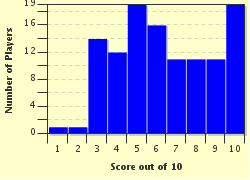Quiz Answer Key and Fun Facts
1. Let's start with the basics: 'Biscuits' in the UK are what are usually called 'cookies' in the US. The source of the American word 'cookie' is 'koekje' which means 'little cake'. Which language does the word 'koekje' come from?
2. Baked food for travellers has been around for several thousand years but what empire-building power gave biscuits their name?
3. Since tea and coffee did not make it to Europe until the seventeenth century, what flavour-enhancing drink did Roman soldiers dunk their version of biscuits in?
4. Hardtack is another form of baked biscuit that was used in sea voyages and for soldier's rations due to its long life when properly stored. Dunking was the best way to soften it and make it palatable. What invention led to the replacement of hardtack from the British Royal Navy rations in the Nineteenth Century?
5. What is the term for the way that liquid is drawn into the biscuit during the dunking process?
6. According to one scientific study, the best drink to dunk your biscuit in is milk. Why?
7. During the American Civil War, some old hardtack was used from the Mexican-American War some 15 years earlier. It was not always that well stored, so softening and flavour-enhancing were not the only reasons for dunking. Which of the following additional reasons applied?
8. And so to the Tim Tam. This antipodean icon is a chocolate biscuit made by Arnott's Biscuit Holdings, founded by Scotsman William Arnott and which is now part of the Campbell Soup Company of the US. Where is the Tim Tam manufactured?
9. The idea to create the Tim Tam was first thought of in 1958. It was to be an improved version of the Penguin biscuit made by McVitie's of the UK. Coincidentally the name is shared with a 1960s American rock band. Where did the name for the biscuit come from?
10. Finally, we have the Tim Tam Slam, which is a form of dunking with a Tim Tam. What is unusual about the technique?
Source: Author
suomy
This quiz was reviewed by FunTrivia editor
WesleyCrusher before going online.
Any errors found in FunTrivia content are routinely corrected through our feedback system.

